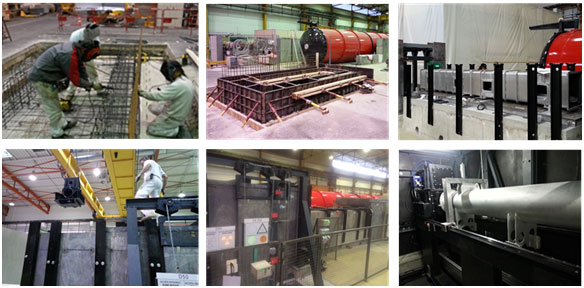IRT Nanoelec’s newest instrument, the D50, is now in service at ILL, where it will be used for industrial R&D. The instrument was pay by IRT Nanoelec with matching funds provided by ILL thanks to a grant from the European Union.
The D50 is the first instrument of its kind anywhere in the world. It is based on a totally new concept: Rainbows-type neutron reflectometry capable of taking measurements ten times faster than traditional instruments. With the D50, Grenoble’s Advanced Characterization Platform now boasts one of the most powerful pieces of equipment in the world available to microelectronics R&D professionals.
The D50 offers two neutron-based measurement capabilities, neutron reflectometry and soft error rate (SER) irradiation testing for electronic components, particularly well-suited to the unique needs of microelectronics R&D.
Work to build and install the instrument began in late October 2014, a phase that involved some structural reinforcement work in ILL’s experiment hall 22. Initial radioprotection tests with actual neutrons were conducted in September 2015. In all it took less than two years to design and build the instrument—an impressive achievement for this type of scientific equipment and proof of ILL’s commitment to very rapidly bring industrial R&D partners precision measurement capabilities.
The D50 is a special reflectometer that simultaneously takes measurements at several wavelengths by refracting neutrons through a prism, using the Rainbows technique developed by ILL scientist R. Cubitt. The simultaneous reflectometry measurements can be taken at wavelengths between 2 Å and 20 Å. To be effective, the Rainbows technique must be used with a detector offering high spatial resolution. Each pixel must measure between 100 μm and 200 μm—impossible with a typical helium-3-type neutron detector, whose pixels are around 2 mm. The D50’s detector has a scintillator that absorbs neutrons and emits visible light, which is then detected by a CCD camera.

The different stages in the construction of the D50, from structural reinforcement of the experiment hall to the commissioning of the high-resolution detector.




